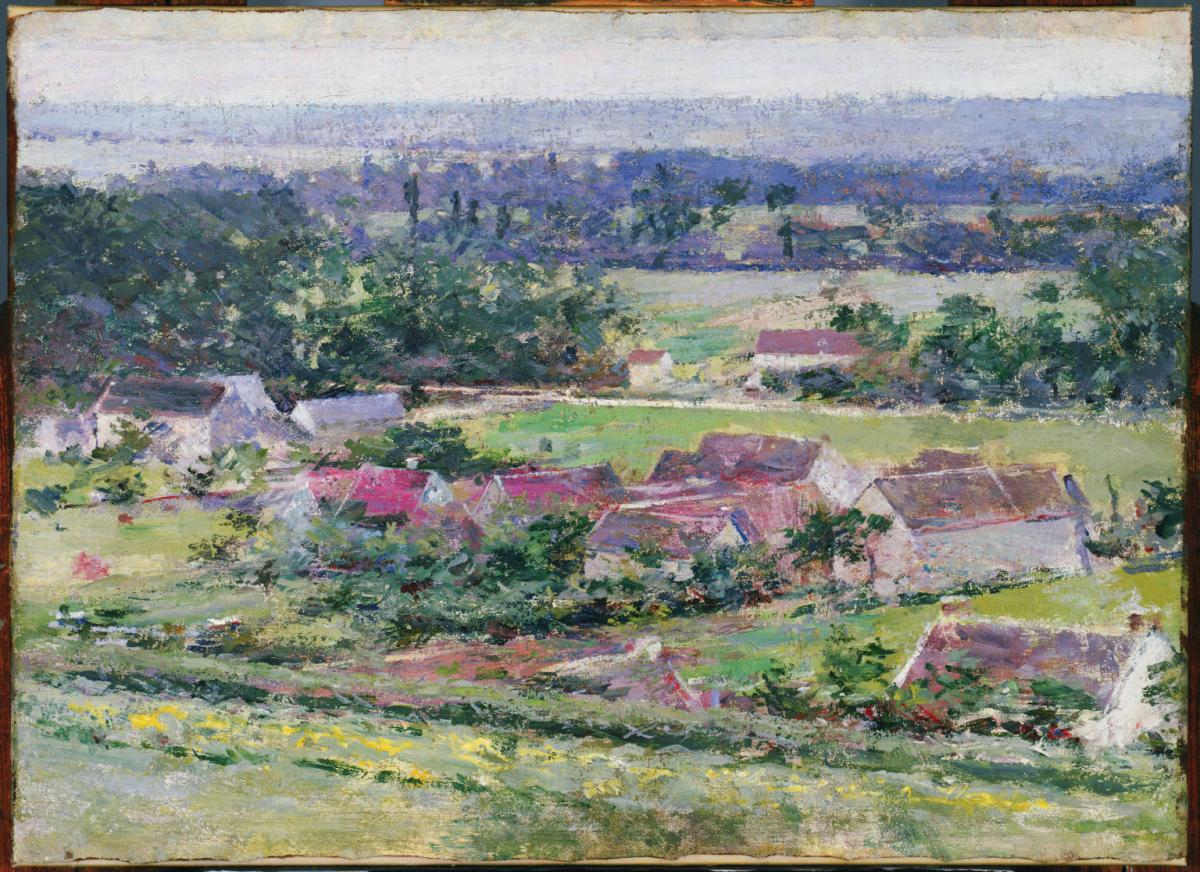Giverny
Theodore Robinson ( c. 1889 )

In 1887, Theodore Robinson made his first trip to France. First living in Paris, he ventured outside the city, about seventy miles northwest, to the small of Giverny, famous for being the residence of Claude Monet. Robinson had spent his time in Paris studying the strict academic rules of strong lines, structured composition, and tonal value. However, when Robinson befriended Monet, his work began to take on a much more impressionistic feel. Robinson lightened his color palette, loosened his brushwork, and placed greater emphasis on replicating the effects of light and atmosphere; however, he retained aspects of his academic training and his admiration for the realist tradition of Winslow Homer and Thomas Eakins, never totally embraced the new influence. To the American eye, though, his works epitomized the French style. When he exhibited seven of his Giverny paintings at the Society of American Artists in 1889, a critic wrote, “Mr. Theodore Robinson is one of those who have really gained a good deal by study of impressionistic methods.” By 1891 he was considered the preeminent impressionist in America, as another critic wrote: “His technique is the more novel, and to frequenters of picture exhibitions will suggest that of Monet, Pissarro, and a majority of other French impressionists….Over a more or less careful drawing they place a mosaic of small touches of pure color, depending on distance to make them blend and harmonize.”
Painted during his third summer in the village, Giverny is a prototypical example of the technique that earned Robinson his reputation in America. Using a vantage from a hillside overlooking the Seine valley, he adjusted his easel to paint several views of the rural landscape. The strong composition and strict delineation of architectural elements in Giverny hark back to Robinson’s academic training, while the bright violet-and-green palette and deft, summary treatment of the light-dappled foliage betray his exposure to impressionism. In Giverny, Robinson emphasized parallel diagonal lines that radiate to the left of the picture plane and terminate at the horizon line near the top of the canvas. Robinson executed this painting en plein-air—out of doors—capturing the immediate brilliance of the sunlight and warm colors of the country, a technique he no doubt learned from Monet.